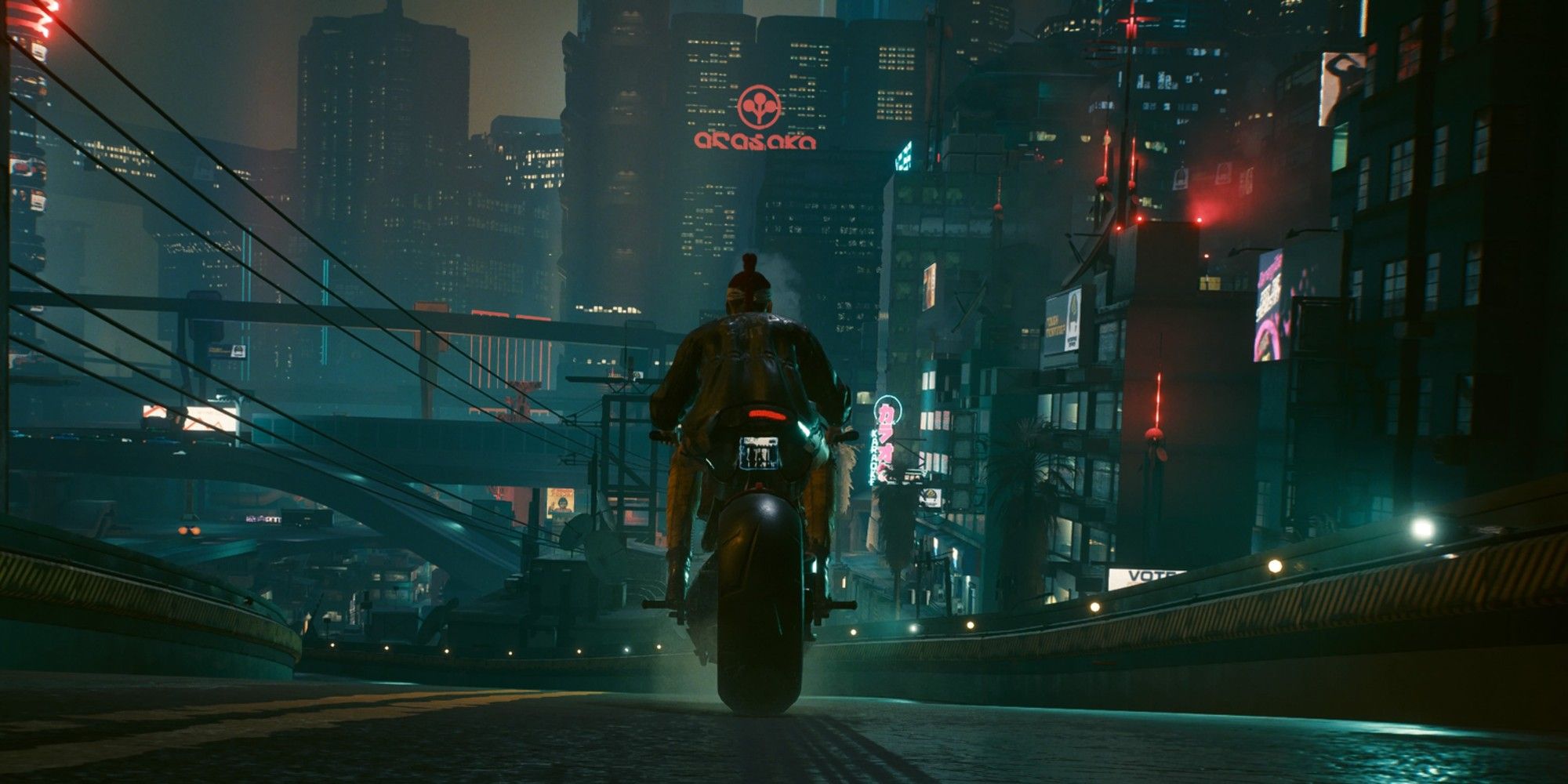My second playthrough of Cyberpunk 2077 has largely been defined by the weight of expectation being lifted off its shoulders. I've now started to divorce the actual game from the storm of hype that anticipated its release. I know it isn't a once in a generation open-world RPG. I know it doesn't live up to the high standard CD Projekt Red set with The Witcher 3: Wild Hunt. I know that this Blade Runner fan will have to keep waiting for the definitive cyberpunk video game experience. Two years on, I am now keenly aware of the game's shortcomings, and I can finally enjoy it for what it actually is.
Still, some things never change. On my initial playthrough of Cyberpunk 2077, I was committed to only driving cars in first-person. I wanted to put myself behind the wheel; to watch the neon lights of the city refract through my rain slick windshield as if I was really there. Night City's visual design was CDPR's most impressive accomplishment on Cyberpunk 2077, but steering your car from a removed third-person viewpoint quickly made the seams of the world more apparent. From first-person, it all seemed, more or less, like a real place.
In 2022, I'm approaching driving in basically the same way I did in 2020. Though I might switch to third-person for a particularly difficult section — the beginning of the "Sinnerman" quest, when Bill Jablonsky tasks you with driving his tractionless truck through intersections where cars are flying by like they're trying to kill Frogger, is one such exception — I'm still sticking to first-person behind the wheel whenever it's practical. However, at this point I know that cars have such a limited field of view that they a) are difficult to drive, and b) prevent me from seeing as much of the world as I want to at one time. Once I got Jackie's red motorcycle through the "Heroes" side job, I've stuck with it. It handles nimbly, and I get to see the whole city.
But, even still, my choice of ride isn't about practicality. It's about creating a MOOD. Though Cyberpunk 2077 has its shortcomings as a choice-based RPG, as an open-world game, and as a first-person shooter, it excels at atmosphere. The hovering cars flying by overhead. The neon lights. The wet pavement. Its cyberpunk isn't my ideal cyberpunk, but 2077 is evocative in its own right. That's particularly true once you reach for the radio dial and I'm especially fond of 91.9 Royal Blue Radio. On Royal Blue, you can hear jazz classics by artists like Miles Davis, Thelonious Monk, and John Coltrane. The fat sax rumble of Charles Mingus' "Solo Dancer," the keening of Chet Baker's trumpet on "You Don't Know What Love Is," the crashing drums on Trio of Doom's "Dark Prince" — the perfect soundtrack to a night pounding the pavement.
The allure of cyberpunk as a genre is tied up in the allure of noir. Blade Runner, where many of cyberpunk's definitive tropes and aesthetics originate, is a noir as much as it is science fiction, starring a rundown detective traipsing down grimy streets, dealing with a boss in a Venetian blinded room calling him back into the game, and attempting to bring a group of escaped convicts to the Los Angeles of a distant 2019's idea of justice. In the original cut, there was even a voice over in which the first lines Harrison Ford's Rick Deckard speaks are, "They don't advertise for killers in the newspaper. That was my profession." Though director Ridley Scott's definitive Final Cut nixed the hardboiled VO, the film is still a noir at heart.
And, jazz is the genre that best brings noir to life. Though V isn't a detective, like Deckard, they are fixated on solving a single life-or-death problem. For Deckard, that means hunting down four Nexus-6 replicants. For V, it means getting Johnny Silverhand out of their head, or dying trying. As you drive through the backstreets of Night City, jazz is the genre that best brings V's struggle against time to life. The sax, trumpet, flute, drums, and upright bass help to evoke a world where emotions run hot in the cool shadows of the city.
Source: Read Full Article
